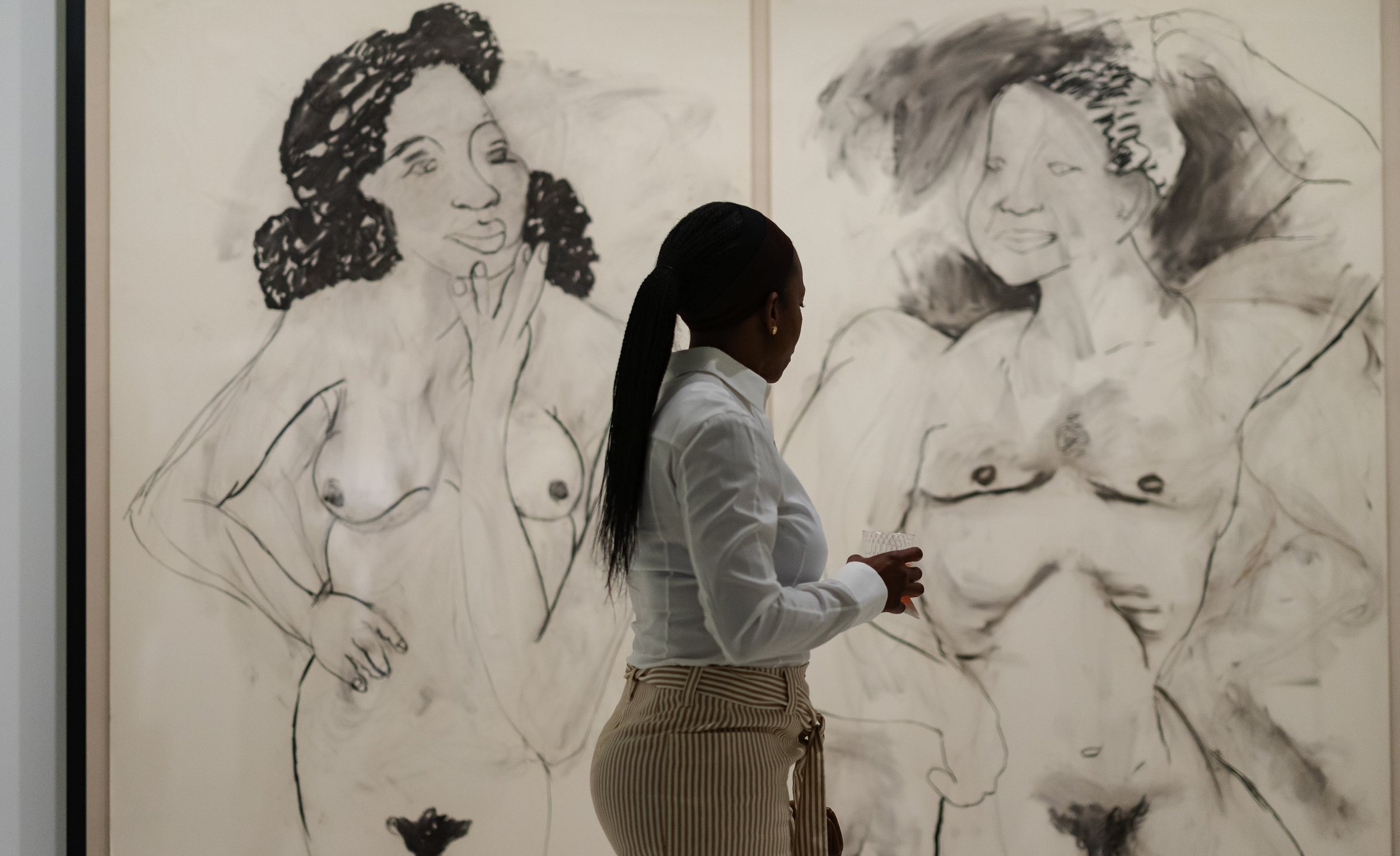
News
How These Second-Generation Gallerists Are Demystifying Art Culture
Barack and Michelle Obama, Angela Bassett and Courtney Vance and Beyoncé and Jay-Z—these are just some of the high profile couples who have made public their obsession with art collecting. While a nod from influential collectors can send an artist’s portfolio soaring, Jumaane encourages first-time art buyers not to get too hung up on what’s considered hot in the mainstream
A Conversation with Jumaane N’Namdi by Charles Moore
“It was like, how do I keep the legacy alive?” he says, reflecting on his decision from 20-some years ago. “So, I started slowly collecting art, and cultivating emerging artists and new collectors.”
Neha Vedpathak: Defiant
“Defiant,” at N’Namdi Contemporary, encompasses 13 multi-layered works by Neha Vedapathak in which the artist offers a view into her innovative practice and recent explorations of space and landscape while inviting the viewer to delve deeper, literally and conceptually, into the works she has fabricated.
Patrick Quarm. Paradox: Surfaces of Self
Patrick Quarm’s exhibition “Paradox: Surfaces of Self” at N’Namdi Contemporary Art’s new Little Haiti space presents nine new works by the artist focusing on cultural hybridity, identity construction and its fluidity, and the interconnectedness of past, present and future.
Stephen Arboite. Dreamscapes: The Metaphor Has Shifted to Healing
With “Dreamscapes: The Metaphor Has Shifted to Healing,” artist Stephen Arboite presents a series of soulful and spiritual works focusing on a metamorphosic journey, inviting viewers along on an emotional and introspective path to self-discovery and healing.
Consider This. An Interview with Gregory Coates
For artist Gregory Coates, the definition of painting is never given, and always up for review. Over the last couple of decades, Coates has adopted an ever-growing array of studio practices, embracing a wide range of materials and techniques more traditionally claimed by sculpture, assemblage, and installation. In the following interview, we spoke with him by email about his artistic development, how he selects and uses his materials, his relationship to art history, and his commitment to fostering a more expansive notion of what painting can and should be.
The Long Sweep. A Conversation with Ed Clark about His 60-Plus Years in the Art World
Abstract Expressionist painter Ed Clark has been an influential figure in the world of painting for more than six decades. In addition to his signature push-broom sweep paintings, he was also an innovator in the field of shaped canvases and one of the original artists in the Brata Gallery during New York’s Tenth Street co-op gallery boom in the 1950s.
N’Namdi Gallery Opens a New Location in Miami
With a history of more than 30 years, and locations in Detroit, Chicago and New York, N’Namdi Gallery has opened a new space in Miami’s Wynwood Art District. Its director, Jumaane N’Namdi, is a talented art consultant and curator who has worked with prestigious institutions such as The Art Institute of Chicago, the Detroit Institute of Arts, the Sunrise Museum, the Museum of Contemporary Art Chicago, The Telfair Museum, the Smithsonian and The Studio Museum in Harlem, among others. N’Namdi sat down with ARTDISTRICTS and spoke about the gallery’s history, the artists he represents and his plans for this new space in Miami.









